It is such a huge privilege for us to interview the wonderful Ellen Johnson, Head of Marketing, Communications & Brand at Coats; the world’s leading industrial thread company. We have followed Ellen’s career for years, no one more so than CMG’s Head of Marketing, Digital, Creative and Tech Kelly Howe. Ellen joined Coats at the beginning of this year, having been at BAFTA. Kelly got the opportunity to find out just how Ellen has adapted to a new team virtually in an entirely different sector. Read Ellen’s insights and learnings in our interview here today, conducted by Kelly Howe.
Ellen, it so great being able to interview you again. So tell us, you started a new role working at Coats in January of this year. How have you found joining a team virtually whilst embracing an entirely different sector at the same time?
The first few months in my role have been incredibly challenging, we were in the heart of lockdown with no real “end” in sight. For me, there was no point in taking a break after BAFTA. At the time, nobody was going anywhere, so we had virtual leaving drinks on the Friday, and the next Monday my new laptop arrived. That was it, straight in, no beating around the bush. In a way, being in lockdown gave me a good opportunity to get my teeth stuck into a new, truly innovative, Coats business. Coats is the world’s leading industrial thread company. Being located in 50 countries and with a revenue of US$1.2bn, there was no time for distraction (with the exception from my 7-year-old at home school!). Like most of the population, I spent the majority of my time on back-to-back Teams calls.
There are quite a few parallels coming from BAFTA to Coats especially around the sustainability agenda. I have gone from eco-conscious A-listers, to green manufacturing – making plastic bottles into thread, bio-dissolvable materials, driving a circular economy, to working with some of the best sports brands in the world and that’s not all…Coats is innovating across multiple vertical’s; from automotive, footwear, personal protection, to NASA space suits and more. I had no idea how much of the world Coats touched. I feel like my brain has exploded and have learnt so much over the past 6 months. In a way, it feels like the timings were a perfect opportunity to embrace a new role and broke up the monotony of being at home.
Virtual had its pros and cons. My role is Global so I wouldn’t necessarily be meeting my colleagues face-to-face anyway, so Teams calls have been a great way of being able to catch up with everyone. Besides, my direct reports are mostly based in the UK. I’ve had to really work hard to get to know them, understand their needs and of course for them to understand me, my personality, and the way I work. Being open, transparent and having the ability to adapt your communication style is so important. It’s vital to recognise that everyone’s needs are different, and to act on this in the correct way is so important.
What tips would you give to anyone changing sector, especially in the midst of a pandemic?
Don’t hold back, just do it and don’t look back. If you’re bored in your role and have stopped learning, it’s time for a change. I meet so many people who have been stuck in the same role for years and are just too scared to move on. Part of being a great marketeer is being able to adapt, have fresh ideas, challenge the norm and changing roles is a great opportunity to fulfil this.
When we last spoke you talked about the importance of brands having a clear creative strategy in place. How have you implemented this strategy at Coats and what should brands be doing to ensure their strategy stays on track to hitting their goals?
I love deep thinking and being imaginative, so one of the main reasons I took this role was to be able to build on and implement a creative approach that is less traditional, and audience focused. This visionary strategy underpinned my overall marketing blueprint of being a modern, authentic, audience centric brand that feels culturally relevant is essential for any business in today’s digital world. No brand wants to be the one to get left behind. It starts internally, getting everyone to think more like a challenger. Engaging content is key, being more audience centric moving away from staged creative to dynamic, mini doc style videos, authentic blogs, Instagram stories, quizzes, we are even sending gift boxes (with a touch of bubbles in there too!).
What have you found to be the most challenging thing about working remotely and how have you tried to overcome some of these challenges?
I’m a pretty active person, usually I cycle into the office so the hardest thing for me is being at home in front of a screen all day. Days seem to fly by and before you know it’s 6:00pm and you’ve barely moved. Initially I was concerned about missing a meeting or taking 5 minutes out to step outside, but I’ve had to reassess this and in collaboration with my team we now try and block out time in the day even if it’s 30 minutes to step outside, go for a run or have some lunch. I’ve also installed a ‘no meetings Friday’ which means that both the team and I can catch up on emails, our own work and write documents before the weekend.
As the world moves to a more hybrid workforce, how will you be planning to lead your teams going forward?
As soon as the lockdown rules lifted, I have been able to meet my UK-based team a handful of times (mostly in pubs!). As the wider marketing team is global, I don’t think things will change enormously for us. I can’t envisage everyone being full-time in the office, and those that will be, will still be spending most of their time on calls to stay connected. Although, in-person office time does create opportunity to break-out, get creative and deliberate ideas face-to-face. Being adaptable, open-minded, and flexible, however, is the main method to ensure nobody feels left out, to benefit both business and our team.








